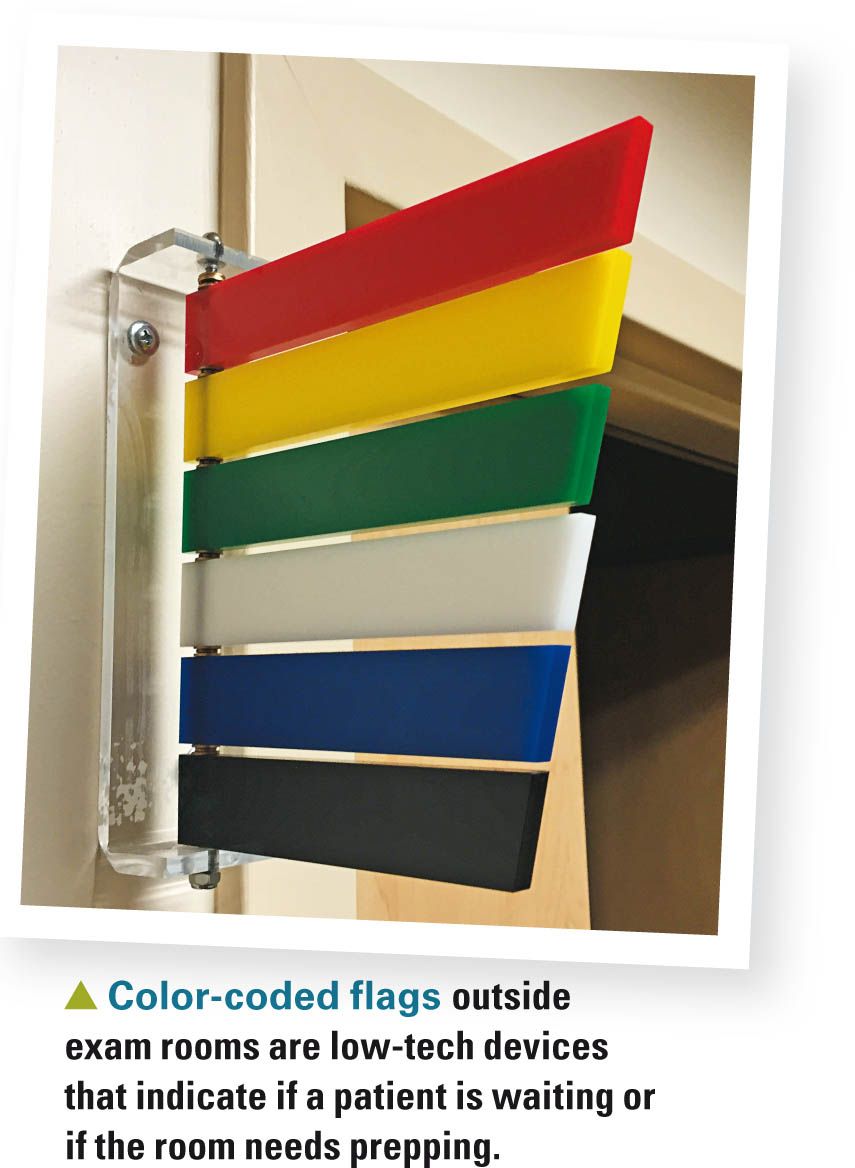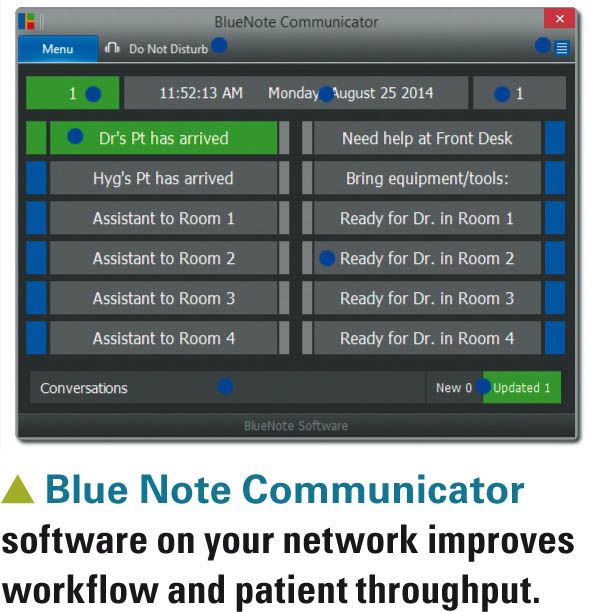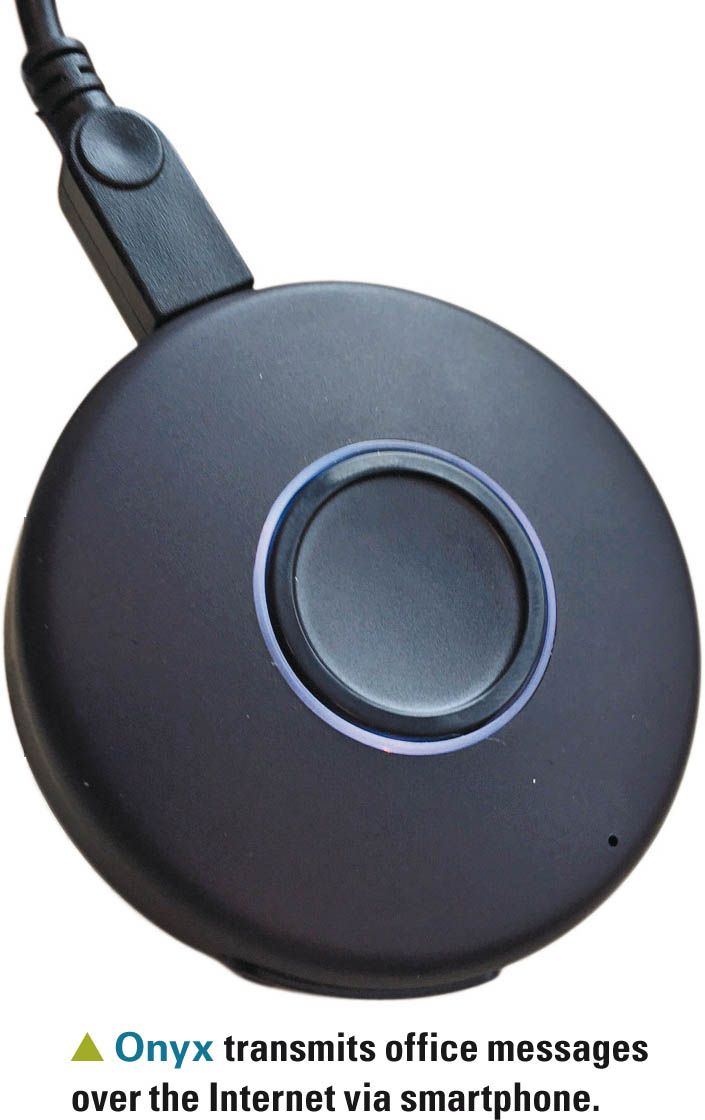Communication in the high-tech office
Despite the growth of retail-based clinics, the availability of direct-to-consumer video visits, and the implementation of the Affordable Care Act, you are having a busy day in the office.
“What we've got here is . . . failure to communicate.”
Cool Hand Luke (1967)
Despite the growth of retail-based clinics, the availability of direct-to-consumer video visits, and the implementation of the Affordable Care Act, you are having a busy day in the office. A really busy day! As circumstances would have it, a partner is on vacation; a nurse is out sick; and the phone is ringing off the hook with requests from parents wanting their child to be seen “today.” It is definitely a “roll up the shirtsleeves and get the job done” sort of day! To get through this day, we need to ensure that there are no failures in communications with your staff and patients.
In the old days . . .
Pediatricians used to have their staff call patients to remind them of appointments in order to avoid “no-shows” and have all patients arrive promptly. This is an extremely time-consuming method of recalling patients. Because many parents have abandoned landlines in favor of cell phones, some of them are unreachable or have voice-message boxes that have reached capacity. Therefore, a significant percentage of your reminder calls never reach the parent.
If your electronic health record system has a portal, you may be able to send patients visit reminder messages via e-mail. However, I would suspect that your portal does not have the capability of requesting a response to the reminder message. Fortunately, there are communication services that can assist with this chore.
Next: The morning huddle
An excellent example is Televox Software (Mobile, Alabama; www.televox.com/) that can contact your patients by text, e-mail, or voice. Typically, the service extracts needed information from your practice management software to determine which patients need to be contacted each day. In addition to recalling patients, Televox also will provide your practice with notification reports; contact no-shows to discourage reoccurrences; and send reminders for patients to schedule well visits. It can even send postvisit surveys to assist with practice improvement.
Recommended: Just say no to Meaningful Use 2
The morning huddle
More and more practices are adopting the “morning huddle” as a quick 5-minute (or less) discussion of the “game plan” for the day. All staff meets briefly to make everyone aware of how many patients are booked; how many appointments are confirmed; and how many appointments are available. Staff is also informed of who will be out, who will be late, and what things need to be done if time permits, so that priorities for the day may be established.

It is an opportune time to introduce new policies, discuss issues, indicate what supplies are running low and need to be ordered, and so on. Depending on your practice size and staffing, you may want to have “team” huddles and, depending on the day, offices may consider having afternoon huddles as well. When confronted with issues such as those I described in the introduction, the huddle should focus on everyone working together to keep waiting time and delays to a minimum.

Which room is next?
As you emerge from one room and stand ready to see the next patient, how do you determine which room to enter next? Some practices use color-coded flags outside exam rooms to indicate if a patient is waiting for the provider, if a room has been cleaned, or if a room needs to be prepared for a patient. Another alternative to the flag system is color-coded magnets on the doorframe, placed out of reach of curious hands. When all else fails, staff can place “sticky notes” on doors to designate the order of rooms to be seen. Sticky notes also can be used to alert physicians that they need to communicate with the front office staff to attend to an important matter before entering a room.
NEXT: High-tech walkie-talkies

A computer-based office communication system that does a superb job of improving intraoffice communication is BlueNote Software (Lewisville, Texas) (www.bluenotesoftware.com). For just $795, you purchase the BlueNote Communicator software and install it on your office network. From each workstation, staff can view or change the “status” of any exam rooms (needs to turn over, ready for doctor) and message individual staff with flashing lights that change colors if not acknowledged or addressed. The software directs the doctor to the next patient, and it can be used by the physician to summon assistance from within the room when necessary. It also allows text “conversations” between individuals or sends announcements to all staff. The software can be customized to include alert tones as well. This is definitely a must-have program for offices that want to improve workflow and patient throughput.
Can you hear me now?
Unfortunately, we cannot keep our eyes forever on our computers to look for messages or alerts. What do you do if you need to summon a nurse for a patient who needs additional tests? How do you make a nurse aware that ordered immunizations will be deferred, or that a nebulizer treatment needs to be given posthaste? Your nurse may be rooming a patient or getting supplies from the stockroom and may not be immediately available. Short of a high-pitched whistle, there are some high-tech (and low-tech) methods worth considering for verbally communicating with your staff.
More: Is technology boon or bane?
Being a technology connoisseur, I purchased 2 Onyx devices from Orion (San Francisco, California; www.orionlabs.co/). These are smartphone communication devices that are reminiscent of the “communicators” worn by everyone in Starfleet in Star Trek: The Next Generation, and all its spinoffs. The Onyx connects via Bluetooth to any smartphone connected to a wireless network, and it is configured via a smartphone app to communicate with one person or a team of persons. The device is worn on a belt, clipped to a shirt, or hung on a neck lanyard. It’s a really cool looking gizmo with a glowing blue light that indicates the device is “online” and ready to communicate. To talk to your staff, you merely push the button, wait for a green light prompt, and speak into the device. Your message is transmitted over the Internet in moments. Only 1-way communication can occur per button press.
NEXT: Is there a place for the Apple Watch?
The Onyx seemed to work well, but we discovered that battery life was limited, and when one of us received a cell phone call, it would be transmitted instantly to the Onyx and broadcast so everyone would hear the conversation (both issues currently are being addressed by Orion). While the device shows promise, we decided to pass on this option until these issues have been resolved.
More tech: Using technology to combat childhood obesity

Our next attempt was fairly low tech. We purchased an inexpensive set of walkie-talkies that my nurse and I would carry throughout the day. The sets were small and unobtrusive, but a single charge did not last through the day, and we were not pleased that our messages could be overheard by individuals who happened to be tuned to our radio channel.
The last method was made possible by the arrival of the Apple Watch (Apple; Cupertino, California; www.apple.com/). If you are an aficionado of the iPhone or iPad, you know that Siri, Apple’s voice-enabled digital assistant, is pretty accurate in understanding your questions and correctly interpreting spoken words. I now use the Apple Watch’s built-in messaging feature to contact my nurse as long as she carries her smartphone with her. I wake Siri up by saying “Hey, Siri,” and then say “Message nurse,” which I have programmed with her contact information. A screen then appears and I have the option of either speaking a message, which is accurately transcribed to text, or sending a voice recording. My message is transmitted and received in seconds. I would not be surprised that as this technology evolves, more and more medical practices will adopt “smartwatches” as a preferred method of communication!
NEXT: The modern sticky note
High-tech sticky notes
Getting back to sticky notes, you may be aware that there are several programs that can deliver sticky notes over a network from one individual to another. These include Stickies from Zhorn Software (www.zhornsoftware.co.uk/stickies/), which is available for free, as well as Notezilla from Conceptworld (Choolai, Chennai, India; www.conceptworld.com/Notezilla).
Notezilla is kind of neat. It provides an elegant, cloud-based subscription, sticky note system. For $30 per year, you can use Notezilla on your network and share notes via any smartphone or tablet. It also lets you have some fun because you can insert photos into notes, paint pictures, and customize your notes with background textures.
Next: "Is my kid ready for a smartphone?"
These programs are not an exact substitute for the BlueNote system, but they can help streamline communication within the office. They are simple to use and let us conserve our valuable paper sticky notes as well.
That’s it!
By communicating effectively, you and your staff have gotten through one of the busiest days ever in your practice! Job well done! Fortunately, you are not on call and you can remain “incommunicado” until tomorrow morning!

Dr Schuman, section editor for Peds v2.0, is adjunct assistant professor of pediatrics, Geisel School of Medicine at Dartmouth, Lebanon, New Hampshire, and editorial advisory board member of Contemporary Pediatrics. He has nothing to disclose in regard to affiliations with or financial interests in any organizations that may have an interest in any part of this article.
Anger hurts your team’s performance and health, and yours too
October 25th 2024Anger in health care affects both patients and professionals with rising violence and negative health outcomes, but understanding its triggers and applying de-escalation techniques can help manage this pervasive issue.